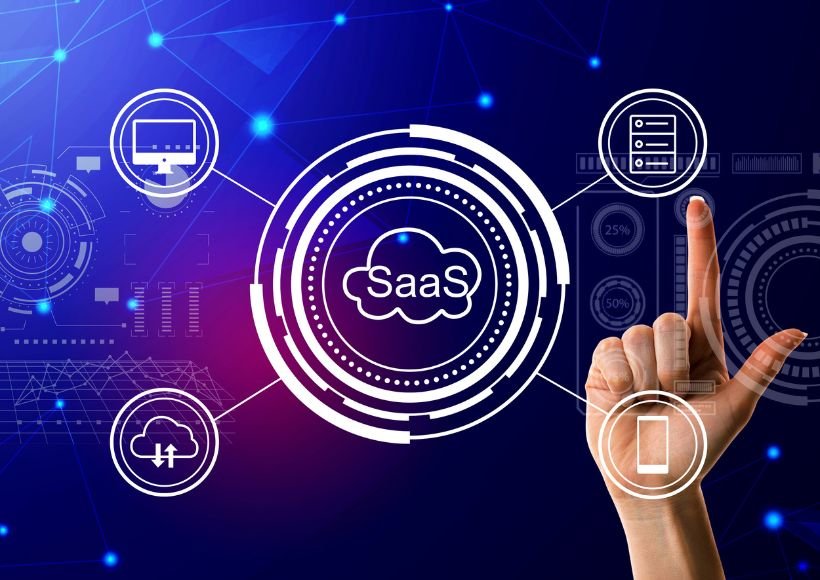Top 5 Mistakes Companies Make in SaaS Access Control

Many corporations today rely on Software as a Service (SaaS) applications to keep their processes running smoothly. In 2022, more than $176.6 billion were spent on implementation of SaaS services in corporations.
Cloud-based tools provide unmatched convenience and flexibility but pose profound safety challenges. Sufficient access control is necessary for strengthening a secure SaaS environment. However, companies often make mistakes that leave their specific data and applications weak.
In this article, we will talk about the top 5 common mistakes businesses make in SaaS access control. This article will advise large organizations about the traps to avoid and provide them with tips to maintain their security posture.
Table of Contents
What is SaaS Access Control?
SaaS Access Control refers to managing secure access control to SaaS products. It involves securing the SaaS model and user roles with rules, permissions, and protocols.
The aim is to conserve access rights, privacy, and regulatory obedience by ensuring that only authorized parties can access these applications. This approach includes authentication, approval, and auditing to limit access to SaaS apps, preventing security breaches.
Core Elements of SaaS Access Control
SaaS user management and core constituents are non-negotiable and critical for secure operations. Following are the core elements:
User Authentication
Verifying the identity of SaaS users who want to access SaaS applications. User authentication often requires a username/password combo, MFA, or other strategies.
Authorization
Determining what actions or data users can access within a SaaS application based on their roles, permissions, and privileges. Authorization ensures that user groups only have access to the resources they need for their specific roles.
User Provisioning and Deprovisioning
Managing users’ accounts by creating, updating, and disabling them as needed. Proper user provisioning ensures that employees access necessary tools and the company’s data, while de-provisioning revokes access when it’s no longer required.
Access Monitoring
Continuously monitoring user roles within SaaS applications to detect suspicious or unauthorized actions. Monitoring helps organizations identify security breaches or policy violations.
Data Encryption
Encrypting data in transit and at rest within SaaS applications to protect it from unauthorized access or interception.
Audit Trails and Logging
Audit trails maintain comprehensive logs of user activities, access requests, and changes to access permissions.
Role-Based Access Control (RBAC)
Assigning access permissions based on job roles and responsibilities within the organization. RBAC ensures that users have the appropriate level of access.
Compliance
Ensuring access control policies align with industry-specific regulations and standards (for example, GDPR, HIPAA) and conducting regular audits to demonstrate compliance.
Top 5 Mistakes Companies Make in SaaS Access Control
The key to strengthening your organization’s SaaS access control is to be aware of and take action against these frequent errors. Some of the mistakes in SaaS Access Control are as follows:
Lack of Training and Awareness for Employees
Not offering your employees thorough training and awareness programs can be highly vulnerable. Employees who aren’t well-informed about security best practices may inadvertently fall victim to phishing attacks, share sensitive information inappropriately, or fail to recognize security threats. Regular training and awareness campaigns are essential to fortify the human element of your security strategy.
Ignoring the Risks of IT
Data breaches caused by a lack of IT risk management include the Equifax breach in 2017, where the personal and financial information of over 140 million individuals was stolen due to a security vulnerability.
Companies often underestimate the risks posed by third-party integrations, APIs, and IT configurations within SaaS services. Ineffective management and monitoring of these components can result in vulnerabilities.
Conduct thorough evaluations of third-party tools, periodically review API permissions, and watch for security-related IT issues to reduce risks.
Relying Solely on Default Settings
Default access control settings in SaaS applications are often designed for broad usability, not optimal security. Relying on these defaults without customization leaves your organization vulnerable to unauthorized user access and data breaches.
Customize access controls to align with your specific security policies, restricting permissions to only what is necessary for each user.
Poor Administration of User Accounts
User account management issues can lead to security flaws. Failing to revoke access promptly for former employees, contractors, or temporary users can result in unauthorized individuals retaining access to critical systems and data. Implement rigid offboarding procedures to ensure that access is canceled promptly when no longer needed.
Absence of Multi-Factor Authentication (MFA)
Failure to enforce Multi-Factor Authentication (MFA) is a severe error. Users must provide various confirmation forms with multi-factor authentication (MFA) to boost security. Without MFA, a compromised password could lead to unauthorized user access. Implement MFA across your SaaS programs to improve security and safeguard against unauthorized entry.
Strengthening SaaS Access Control Practices
Strengthening SaaS access management practices is integral for protecting susceptible data and maintaining your organization’s security. Here are steps you can take to enhance your SaaS access control:
Implement Role-Based Access Control (RBAC)
Create well-defined roles within your corporate network and assign approvals based on job duties. RBAC ensures that users have entry only to the resources and data necessary for their roles.
Regular Access Reviews
Conduct systematic reviews of user access permissions. Remove or adjust permissions for users who no longer require specific access or have changed roles.
Least Privilege Principle
The principle of least privilege gives customers the least access required for their tasks. Avoid granting excessive employee permissions that can lead to misuse or data exposure.
Password Policies
As per a research, 36% of breaches in 2020 involved phishing, making it the most common type of password attack.
Enforce strong password policies, including complexity requirements, regular password changes, and length. Encourage the use of password managers.
User Training and Awareness
Educate your employees about security best practices, including recognizing phishing attempts and the importance of strong authentication.
Incident Response Plan
Develop a strong incident response plan to address any security breaches promptly. Create a plan outlining containment, investigation, communication, and recovery steps.
Third-Party Risk Assessment
Assess the security practices of third-party vendors or applications integrated with your SaaS solutions. Ensure they meet your security standards.
Regular Security Updates
Keep your SaaS application security and associated Software updated with the latest security patches and updates.
Data Backups
Regularly back up your data and ensure that backup processes are secure and regularly tested for restoration.
Compliance Adherence
Understand and adhere to relevant data privacy regulations and compliance standards, such as GDPR, HIPAA, or industry-specific requirements.
Employee Offboarding Procedures
Establish well-defined procedures for revoking access when employees leave the Google workspace. This prevents security breaches by avoiding prolonged access.
Conclusion
Effective access control to SaaS is a strategic imperative. As we conclude our examination of the top five mistakes companies make in SaaS user management, it’s evident that avoiding these pitfalls is vital for safeguarding sensitive data, ensuring compliance, and fortifying organizational structure and security.
Business processes can strengthen their SaaS access management solutions by addressing weak password policies, keeping access management in check, and embracing robust authentication methods. Organizations can mitigate risks, leverage cloud-based technologies, and maintain the trust of customers and stakeholders.
Also Read : How To Secure Your Company Data And Applications In The Cloud




